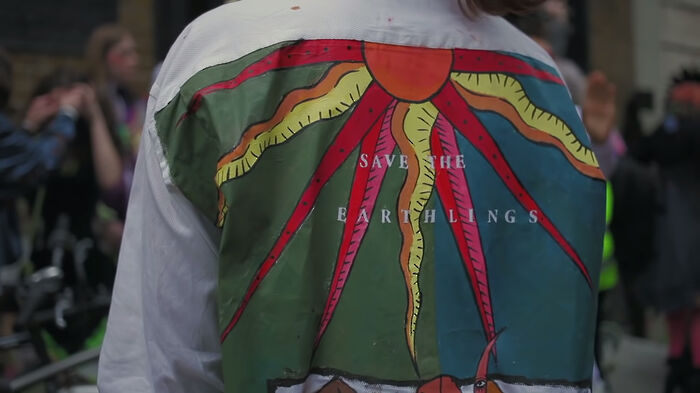Look past the pricey hype – making minimalism work for you
Olivia Emily on how to be more sustainable while staying true to your individual style (and your budget!)

Content Note: This article contains a brief mention of fatphobia.
It was October 2016 when I bought my dream coat – a faux sheepskin number from Topshop that has kept me warm winter after winter after winter. It’s set the standard to which I now hold all other coats. The buttons have been replaced and reattached countless times, the exposed fur has seen better days, and the cost-per-wear is gloriously low.
I was 16 when I bought it, a shopaholic in love with its velvety feel. I’m now 19 and glad that I originally forked out the money for it – a nice, round £100 is quite steep for a 16-year-old. Luckily, I keep coming back to this coat – it’s definitely a staple piece in my wardrobe, something that increasingly resembles (but is definitely not identical to) the hailed minimalist ‘capsule wardrobe.’
The capsule wardrobe is unfailingly sold to us in pristine, elegant words like “timeless” and “curated,” but that’s a tricky thing to strive for when you’re still growing, figuring out who you are and how to express that changing identity through your clothing. My wardrobe has changed considerably over the last 3 years. How could I possibly have survived with only a capsule?
Society has also altered over the course of these three years. We now have more of a sustainability conscience and we’re increasingly tolerant only of items that ’spark joy.’ This means that, currently, we’re living in a fashion era of contradiction. We’re encouraged to shop less, to shop locally, to buy second hand – yet we also must keep up with new trends, buy a new outfit for each special occasion, and discard outfits once they’ve made a single appearance on our Instagram feeds.
£100 is quite steep for a 19-year-old, too, and I’d definitely feel the squeeze if I needed to purchase a replacement for my beloved coat (God forbid). Actually, £100 is quite steep for a lot of people. Minimalism has a class problem (as well as a fatphobic problem), especially when we consider that £100 is definitely on the cheaper end of the spectrum where capsule wardrobes are concerned.
Living a clutter-free life and embracing the ease of a capsule wardrobe is achievable only when you know that if you really need a replacement for any of the things you toss, you could purchase it in an instant. For example, I barely wear a gorgeous pair of leather knee boots that I own, but how could I throw them away when I might like them again in the future and not be able to afford them?
This attitude also encourages disposability. It really shouldn’t be a question of whether to keep things, but whether to purchase them in the first place.

As I’m entering 2020, I’m trying to work out how I can be more sustainable while also remaining true to myself and my ever-changing sense of style. I have a few key pieces that I return to (things that ‘spark joy’), and I’ve donated a lot of the cheaper things that I don’t wear anymore. However, they are most certainly not typically ‘minimalist’ items. Minimalism is suited exclusively to slim working women – I don’t see many options for those whose weight fluctuates or don’t work a 9 to 5 profession.
We don’t all live the same life, and cannot possibly benefit from having the same perfectly-curated wardrobe. That would also be terribly boring.
Similarly, we can’t all afford the same level of sustainability, because the most durable items really are out of reach for most people. Inclusive, truly sustainable minimalism should be about changing individual habits, not enforcing this brand of minimalism that “carries a subliminal message of superiority.” For example, instead of three pairs of jeans from Primark, buying one pair of jeans from Topshop – or instead of three from Topshop, one pair from Levi’s.
Investing in things that will last longer is key to combating fast fashion. However, this has to be adapted to individual circumstances in order to be successful. We all need to reduce consumption, but some people literally can’t afford to only purchase the most durable items, whether that’s shoes, coats, or even frying pans and plates. Marie Kondo herself is flogging candles for $86; that’s her brand of minimalism, not mine.
Buying second hand and donating unwanted clothes to stop so many items going to landfill is also a great life change. Fix your loved items with a needle and thread instead of chucking them, whether that’s a loose button or a split seam (getting a seamstress to do it for you is also usually pretty cheap!). Upcycle second hand items to match new trends by getting creative with scissors, re-hemming or strategic tying. Personally, I like to crop preloved men’s shirts.
Ultimately, we need to pause before we purchase. Do I really need this dress? Why can’t I just wear the same one I wore last month? It’s a balance I’m still negotiating. However, I’m also finding ways to accept that all change in this direction is good, no matter how small or how limited your budget.
 Comment / The (Dys)functions of student politics at Cambridge19 January 2026
Comment / The (Dys)functions of student politics at Cambridge19 January 2026 News / Local business in trademark battle with Uni over use of ‘Cambridge’17 January 2026
News / Local business in trademark battle with Uni over use of ‘Cambridge’17 January 2026 Features / Exploring Cambridge’s past, present, and future18 January 2026
Features / Exploring Cambridge’s past, present, and future18 January 2026 News / Your Party protesters rally against US action in Venezuela19 January 2026
News / Your Party protesters rally against US action in Venezuela19 January 2026 Lifestyle / Seoul food19 January 2026
Lifestyle / Seoul food19 January 2026








